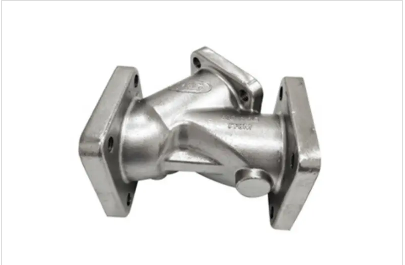Mobile:+86-311-808-126-83
Email:info@ydcastings.com
Exploring the Advantages and Techniques of Pressure Die Casting for Aluminium Components in Manufacturing
Pressure Die Casting of Aluminium An Overview
Pressure die casting is a widely used manufacturing process that involves injecting molten metal into a mold under high pressure. This technique is especially effective for producing components made of aluminium, which is known for its lightweight, corrosion resistance, and excellent strength-to-weight ratio. The process offers several benefits, including high dimensional accuracy, complex part geometries, and a smooth surface finish, making it an ideal choice for various industries, including automotive, aerospace, and consumer electronics.
The Process
The pressure die casting process begins with the preparation of the die, which is typically made from high-strength steel to withstand the intense pressure of molten aluminium. The die consists of two halves, which are held together by a clamping system during the injection process. The molten aluminium, usually alloyed with other elements to enhance its properties, is poured into a holding furnace and heated to a specific temperature.
Once the molten metal reaches the desired temperature, it is injected into the die at high pressure using a plunger mechanism. This pressure can range from 1,000 to 2,500 psi, ensuring that the metal fills the mold cavities quickly and completely. The rapid cooling of the molten aluminium solidifies it into the shape of the die, resulting in a finished component with excellent surface quality and fine details. After a short cooling period, the die opens, and the part is ejected, often utilizing automated systems for efficiency.
Advantages of Pressure Die Casting
One of the primary advantages of pressure die casting is its ability to produce high-volume parts with intricate designs and tight tolerances. The process is highly repeatable, making it suitable for mass production, where consistency is key. Additionally, the pressure applied during casting minimizes air pockets and defects, leading to a stronger final product.
Another significant benefit is the reduction of material wastage. Unlike other metalworking processes that may involve cutting or machining, pressure die casting typically uses near-net-shape manufacturing. This means that the final part requires less machining, leading to more efficient use of raw materials.
pressure die casting of aluminium

Pressure die casting also offers a shorter production cycle. Once the die is prepared, the time taken to produce each component is significantly reduced compared to traditional casting methods. This efficiency can lead to cost savings in both labor and materials, making it an attractive option for manufacturers.
Applications
The applications of pressure die casting in aluminium are vast. In the automotive industry, it is commonly used for producing engine blocks, transmission cases, and brackets due to aluminium's lightweight properties, which contribute to improved fuel efficiency. In aerospace, the demand for high-strength components that can withstand extreme conditions makes aluminium die casting a preferred choice. Additionally, consumer electronics manufacturers utilize this process to create enclosures and structural components that require precision and aesthetic appeal.
Challenges and Developments
Despite its advantages, pressure die casting does face some challenges. The initial cost of creating a die can be high, which may be a barrier for small-scale production. Furthermore, controlling the temperature and pressure during the process is crucial, as any deviation can lead to defects in the final product.
Recent advancements in technology, including computer simulations and improved alloys, are helping to overcome these challenges. The development of more efficient die materials and coatings is also enhancing the lifespan of the dies, making pressure die casting an increasingly viable option for manufacturers.
Conclusion
Pressure die casting of aluminium represents a blend of efficiency, precision, and versatility in manufacturing. Its ability to produce complex, high-quality components makes it integral to various industries. As technology continues to advance, the future of pressure die casting looks promising, paving the way for even greater applications and innovations in metal casting.
-
Why Should You Invest in Superior Pump Castings for Your Equipment?NewsJun.09,2025
-
Unlock Performance Potential with Stainless Impellers and Aluminum End CapsNewsJun.09,2025
-
Revolutionize Your Machinery with Superior Cast Iron and Aluminum ComponentsNewsJun.09,2025
-
Revolutionize Fluid Dynamics with Premium Pump ComponentsNewsJun.09,2025
-
Optimizing Industrial Systems with Essential Valve ComponentsNewsJun.09,2025
-
Elevate Grid Efficiency with High-Precision Power CastingsNewsJun.09,2025











